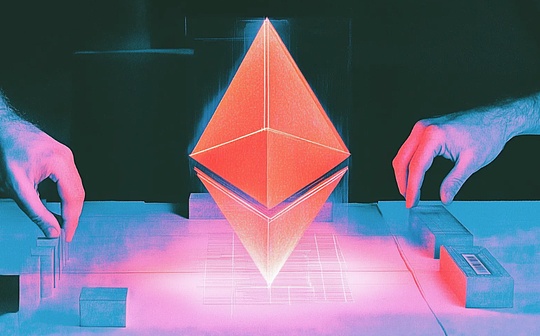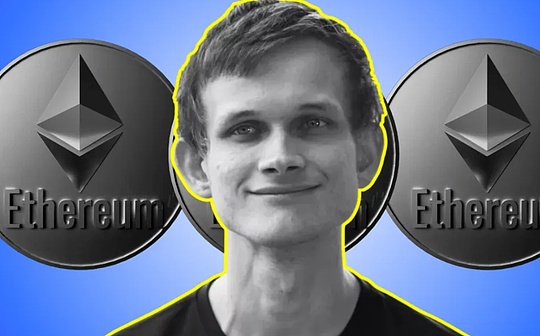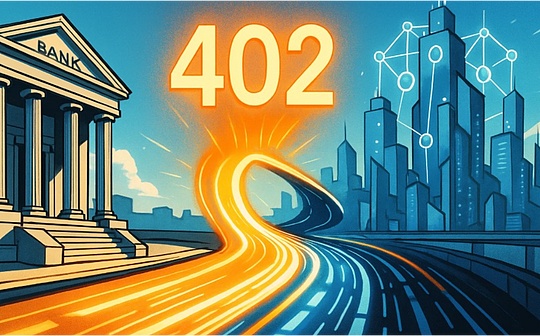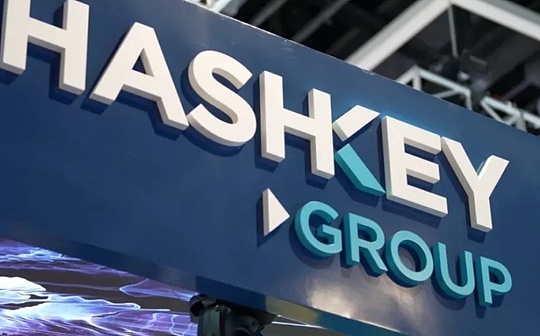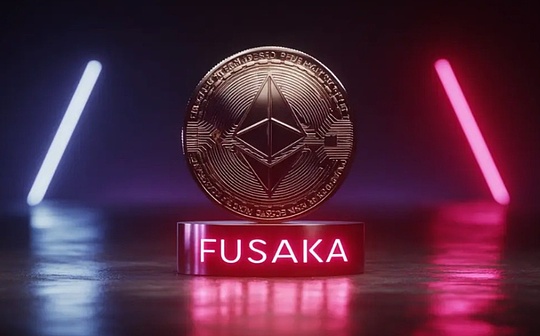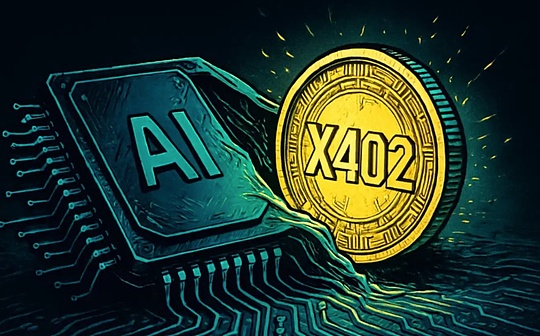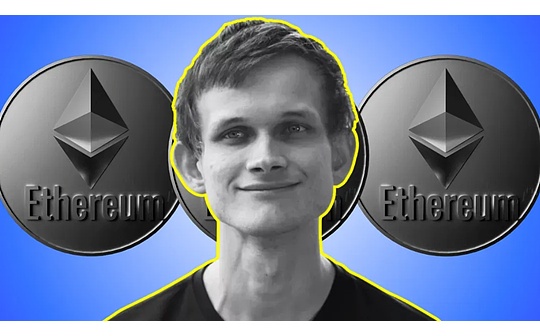
Author: YBB Capital Researcher Ac-Core Translation: Shan Oppa, Bitchain Vision
1. Pectra hard fork background
Ethereum Pectra upgrade will be officially launched on March 5, the upgrade combinesPragueandElectraTwo updates aimed atEnhance the execution and consensus layer of Ethereum.Pectra hard fork marks an important milestone in the development of Ethereum, with the goal ofImprove the ETH staking mechanism, improve the scalability of layer 2 (L2), and expand network capacity by introducing 11 Ethereum Improvement Proposals (EIPs).The upgrade was firstFebruary 24, 2024existHolesky Test Networkand planned toApril 8, 2024Deployment to the Ethereum main network, the specific time depends onSuccessful completion of Holesky and Sepolia testnet upgrades.
existMarch 2024After the Dencun is upgraded,Pectra expects to integrate multiple EIPs to address challenges in scalability, security and user experience.According to ethereum.org, the upgrade is divided into two stages:
Phase 1: mid-March 2025
•L2 Blob capacity doubles: Convert each block toBlob capacity increased from 3 to 6, reduce network congestion and reduce transaction fees.
•Account abstraction: Allow users to useGas fees paid for stablecoins such as USDC and DAI, improve payment flexibility.
•Verifier pledge limit increased:WillThe stake cap for a single validator increased from 32 ETH to 2,048 ETH, support large-scale pledge operations.
Phase 2: End of 2025 – Early 2026
•Introducing Verkle Tree:useVerkle TreeAlternativeMerkle-Patricia Tree, optimize data storage and improve synchronization efficiency.
•PeerDAS (Peer-to-peer data availability sampling): Allow nodes to be inVerify without storing all transaction data, improve scalability.
2. Key Ethereum Improvement Proposals (EIP) in Pectra Upgrade
The Pectra upgrade includes 11 Ethereum Improvement Proposals (EIPs) designed to enhance scalability, security, account abstraction and validator staking mechanisms.The following highlights some key proposals based on the potential impact on Ethereum’s development (depending on personal research perspectives):
1. EIP-7702: Account Abstraction
-
Overview: Allows externally owned accounts (EOA) to perform certain smart contract functions, enabling bulk transactions and gas fee sponsorship.
-
View: This will significantly enhance the account abstract wallet, allowing it to run like a smart contract – processing bulk transactions and enabling third-party gas payments.(The relevant EIP-7840 further expands the account function and realizes customizable account behavior).
2. EIP-7251: Add verifier pledge
-
Overview: Increase the maximum staking of verifiers from 32 ETH to 2,048 ETH , simplify verifier management and allow for larger staking nodes.
-
Viewpoint: Although this increases the degree of centralization of Ethereum’s staking, it also raises the entry threshold for validators, making the staking process more suitable for institutions rather than retail participants.
3. EIP-7002: Cash withdrawal improvement
-
Overview: Allows execution layer address to trigger withdrawal, reduces dependence on the consensus layer, and simplifies the withdrawal process.
-
Viewpoint: Make withdrawals more direct and efficient, eliminating unnecessary steps in the pledge withdrawal process.
4. EIP-6110: Verifier activation delay optimization
-
Overview: Reducing validator activation delay from approximately 9 hours to approximately 13 minutes significantly improves network participation efficiency.
-
Viewpoint: Faster validator joining can improve Ethereum’s resource efficiency, reduce network congestion, and reduce operating costs.
5. EIP-7691: Block size extension
-
Overview: Increase block size by 50%, enabling the network to process more transactions and improve overall scalability.
-
View: Reducing congestion and increasing transaction speed will help Ethereum handle higher traffic, especially during peak usage.(Related EIP-7742 dynamically adjusts the blob capacity of each block to further optimize L2 expansion).
6. EIP-7516: Enhanced MEV Transparency
-
Overview: Provides more visibility into the maximum extractable value (MEV), helping users and developers better understand and monitor MEV activities.
-
Viewpoint: Although improving transparency reduces arbitrage opportunities, it enhances the fairness of Ethereum transactions.
7. EIP-7549: Gas Cost Adjustment
-
Overview: Optimize gas fee structure to reduce congestion and stabilize transaction costs.
-
Viewpoint: Helps alleviate the surge in gas fees during network congestion, making the fees more predictable.(EIP-6046 also adjusted gas fees, but EIP-7549 introduced a more dynamic and flexible pricing mechanism).
8. EIP-7685: Governance mechanism optimization
-
Overview: Improve the governance structure of Ethereum to make it more decentralized, transparent and efficient.
-
Viewpoint: Proposal approval can be accelerated and community-driven decision-making can be improved.
9. EIP-7021: Improvement of Verifier Punishment Mechanism
-
Overview: Adjust penalties to better align validator incentives with cybersecurity and minimize malicious behavior.
-
Viewpoint: As a balance between increasing stakes for validators (EIP-7251), ensures fair competition among validators.
10. EIP-7683: Smart Contract Performance Optimization
-
Overview: Improve gas efficiency of smart contract execution, reduce execution costs and improve on-chain efficiency.
-
View: This will benefit DeFi applications, reduce costs and increase transaction speeds—it is possible to optimize Uniswap’s trading mechanism.
11. EIP-6123: Cross-chain compatibility improvements
-
Overview: Enhance the interoperability of Ethereum with other blockchains and promote seamless cross-chain operations.
-
Viewpoint: Strengthen the role of Ethereum as a multi-chain hub to make cross-chain asset transfer and interaction smoother.
3. Pectra’s double-layer upgrade
Pectra adopts a two-layer upgrade method, merging the execution layer (Prague) and the consensus layer (Electra) to solve the possible synchronization problems of individual upgrades.Historically, Ethereum’s execution and consensus layers have been independently upgraded due to their different functions:
-
Execution layer (Prague): Responsible for handling user transactions, executing smart contracts and managing state changes.This is the layer where users interact directly with Ethereum, which is the core infrastructure for decentralized applications (DApps) and smart contracts.
-
Consensus layer (Electra): Operate under the Proof of Stake (PoS) mechanism, manages validators, ensures block production and maintains network security.This layer ensures consistency and integrity of the blockchain, and validators pledge assets to align their interests with the security of the network.
Notable EIPs that require layer modification
Several EIPs in Pectra upgrades need to be modified to the execution layer or consensus layer:
Modify the EIP of the consensus layer:
-
EIP-6110, EIP-7002, EIP-7251, EIP-7549, EIP-7685, EIP-7691
Modify the execution layer EIP:
-
EIP-2537, EIP-2935, EIP-6110, EIP-7002, EIP-7623, EIP-7685, EIP-7702, EIP-7840
Other key EIPs in Pectra
EIP-7623: Cross-chain messaging mechanism enhancement
-
Overview: Improve cross-chain message processing and enhance the efficiency and security of cross-chain communication.
-
Significance: While Pectra focuses on Ethereum’s internal execution and consensus layer, EIP-7623 aims to optimize interoperability with external blockchains, especially in cross-chain asset transfer and data transmission.
EIP-2537: BLS12–381 Curve Operation
-
Overview: Introducing support for the BLS12–381 encryption curve, which is critical for Zero Knowledge Proof-of-Law (ZKP) and encryption.
-
Significance: Unlike Pectra’s widespread focus on transaction processing, gas fee optimization and validator mechanisms, EIP-2537 specifically enhances encryption capabilities, especially in privacy-centric applications and proof verification.
EIP-2935: Verifier recovery mechanism
-
Overview: Provides a more flexible mechanism for validators to regain their status after losing their validator role.
-
Significance: EIP-2935 Ensures that validators can reintegrate into the consensus process under certain conditions.In contrast, Pectra’s EIP-7251 and EIP-7021 focus on pledge limit adjustments and punishment mechanisms, improving validator incentives and security measures.
4. The impact of Pectra on Ethereum and cryptocurrency markets
Decentralized applications
The Pectra hard fork brings smart contract functionality into regular wallets, simplifying the development process and expanding potential applications.Features such as social recovery and bulk transactions make it easier to create user-friendly DApps, increasing the reliability and efficiency of decentralized applications in DeFi, GameFi and other areas.
However, Ethereum faces an increasingly greater challenge, the Layer 2 (L2) “parasitic” effect.The L2 chain absorbs a large part of DeFi activity, resulting in a decline in main network transaction fees and an increase in ETH inflation.While L2 is part of the Ethereum ecosystem, their centralized sorters and independent economic models have raised concerns about Ethereum’s long-term value proposition.
The long-term value of Ethereum
Many Ethereum holders are disappointed with ETH’s price performance in this cycle, with some believing that Pectra may be a game-changer, especially in terms of staking improvements and L2 scalability.This upgrade introduces several key enhancements:
-
More flexible wallet operation, support bulk transactions and sponsor gas fees
-
Increase verifier pledge limits for faster withdrawals and verifier entry
-
Increase block capacity to speed up transaction processing and increase gas fees
The higher staking threshold improves MEV transparency, improves MEV costs, and improves the transparency and efficiency of network governance.Smart contract execution becomes cheaper, cross-chain compatibility increases, and transaction processing becomes more cost-effective.
However, the fragmentation problem of Ethereum is still unsolved.The ecosystem faces a fundamental problem: Should Ethereum target a high-throughput single-chain model, or should it continue to rely on fragmented L2 aggregation?This dilemma may become a long-term constraint on Ethereum’s development.
Solana Factor
Solana’s price surge is mainly due to high throughput, low transaction costs and strong U.S. capital support.Unlike Ethereum’s decentralized liquidity on L2, Solana’s monolithic liquidity model unifies assets in a single network.Ethereum successfully solved the scalability problem with its L2 solution, but at the cost of innovation decentralization and repetition, which makes the monolithic chain model increasingly attractive.
From a market perspective, Ethereum’s biggest advantage remains its dominance in decentralized finance (DeFi)—a core value driver of the Ethereum ecosystem.
Compromise to decentralization
The biggest advantage of Pectra upgrades is increased security and scalability, but EIP-7251 also brings a double-edged sword:
-
Advantages: Integrate the number of validators, reduce the burden of large-scale storage and reduce network operation overhead.
-
Disadvantages: Increased centralization makes Ethereum more popular among large investors and institutions, but may alienate retail participants.
The strategic question now is whether Ethereum can leverage the staking cap of 2,048 ETH to attract institutional capital, just as Solana and Sui are attractive to U.S. investors.Can Ethereum prices push up by attracting institutional funds at the cost of decentralization?
Ethereum is now facing a new version of the “Impossible Triangle”:
-
Narrative power
-
Centralized price control
-
Decentralized PoS staking
Finding the right balance between these elements will become the biggest challenge for Ethereum in the future.
Where is Ethereum’s North Star?
Ethereum seems to be lost.The dispersed ETH supply is gradually expanding, and DeFi activity has shifted to the L2 chain, resulting in a sharp decline in mainnet cost capture.In fact, the L2 chain runs as an independent blockchain, while the centralized sorter actually runs as an independent ecosystem.
-
Base’s revenue flows to Coinbase
-
Arbitrum’s profit flows to Arbitrum DAO
-
The Ethereum mainnet failed to capture this value
Meanwhile, other blockchains have clear narratives:
-
Bitcoin = Digital Gold
-
Solana = Nasdaq on chain
-
Artificial Intelligence Application = Next Frontier
Solana’s DeFAI and AI Agent narratives drive the SOL/ETH ratio up, realizing its vision as Ethereum’s most powerful competitor.Metis has repositioned itself as an AI-centric blockchain, competing with DeFAI for an intent-driven ecosystem.
So, what is Ethereum’s North Star?
Ethereum’s ETF application continues to be in trouble, mainly attributed to two key issues:
1. Lack of staking benefits
-
Unlike BTC ETFs, Ethereum ETFs do not offer staking rewards.
-
Holding ETH through an ETF will miss about 3.5% of the APY staking reward.
-
Investors also have to pay management fees and cannot obtain DeFi earnings opportunities.
2. Lack of institutional coordination
-
Ethereum’s strong decentralization makes it difficult for Wall Street to dominate.
-
Unlike Bitcoin, the core value of Ethereum has not yet been fully mastered by traditional finance.
-
Institutional participants participate primarily in Ethereum through stablecoins and DeFi, rather than direct contact with ETH.
However, Pectra’s 2,048 ETH staking cap indicates a potential shift.By allowing larger institutional holdings, Ethereum may align with institutional capital through RWA consolidation, which may make Ethereum staking ETFs as strategically important as Bitcoin reserves.
Ethereum’s short-term Polaris may be a staking-based ETF that elevates the price narrative of ETH to the level of Bitcoin’s strategic reserve status.

